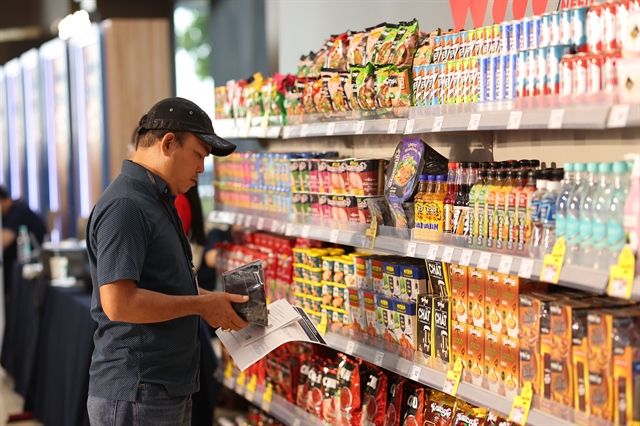 Opinion
Opinion

Nguyễn Hồng Sơn, director general of the Plant Cultivation Department, speaks to the newspaper Nông thôn Ngày nay (Countryside Today) on reasons why farmers have to destroy their farm products right on their fields
 |
| Nguyễn Hồng Sơn. — Photo danviet.vn |
Nguyễn Hồng Sơn, director general of the Plant Cultivation Department, speaks to the newspaper Nông thôn Ngày nay (Countryside Today) on reasons why farmers have to destroy their farm products right on their fields
Since early March, vegetable prices have dropped considerably and many farmers didn’t even bother harvesting them. Has your department adopted any measures to address the problem?
By learning the news reported in the media and reports filed by our own inspectors, on March 15, the Ministry of Agriculture and Rural Development (MARD) instructed the Department of Plant Cultivation work closely with the Department of Processing and Agro Products and the Department of Plant Protection to conduct a special review of the remaining vegetable areas that have not been harvested in the field and recommend the farmers to adjust their planting schemes.
Through such field visits have you come up with an idea why there was such a steep drop in the vegetable prices?
In our opinion, there are three main reasons leading to the steep drop in the vegetable prices since the early March.
First, as a routine, when farmers start to plant the spring rice crop, farmers will begin to clear the field in about 15 days before starting the spring rice cultivation. So as a routine, the vegetable price at this time is always going down.
Second, taking advantage of the high price of the vegetable from the second winter vegetable crop, some farming households did try to grow their first vegetable crop one month in advance in a hope to have better price for their vegetable products. That’s why the harvesting time of the spring vegetable crop and the second winter vegetable crop take place at the same time. That’s the main reason leading to the problem of “piling up of vegetable in the field”.
And third, the weather is getting warmer in late February and early March, we have some other types of vegetables available for harvest, just like amaranth, morning glory, basella alba and others. That’s a key reason leading to the problem of piling up of some winter spring crop vegetable like kohlrabi, cabbage, beets and others.
However, according to reports the total areas of vegetable acreage have not been harvested are not very big. For example, Hà Nội has 1,150 ha, Hải Dương 100 ha and more than 10 ha from other provinces. That’s why I don’t think it is a big problem for the remaining vegetable which is still in the field now. Worth of notice is that quite a lot of vegetable, particularly the kohlrabi are too stale to harvest. For example, the Mê Linh District of Hà Nội had some 10 ha of stale kohlrabi while in Hưng Yên, it had 11 ha of stale kohlrabi.
However, some people have attributed the problem to the foreign imported vegetables, particularly from China. How do you respond to such a claim?
Normally, in the spring season we often see in the market Chinese kohlrabi and cabbage. As we all know, at this time of the year, Vietnamese kohlrabi or cabbage is no more delicate was they were in the winter time. That’s why. Some vegetable imported from China have become the favourite for many Vietnamese buyers due to their delicacy and good taste. So are prices are just about a half of the price of our vegetables. This is food for thought for us on when to grow what type of vegetable to make them suitable to our climate and also suitable to the people’s “pockets”.
Have the Department of Plant Cultivation and concerned agencies come up with suggestions/recommendations to farmers to avoid the problem of having bumper crops but gaining small benefits?
In Việt Nam, we have two groups of vegetables – the temperate and tropical climate. That’s why the season for each type of vegetable is known to all Vietnamese farmers. But what we should do is to recommend the farmers to co-operate with each others and to pay attention to market demand. Of course, from the side of the MARD, we’ll keep inform farmers about what’s happening in the market as well as market’s demand.
Other suggestion is that the farmers should be apart of the production chain and they should form themselves into a co-operative or collective unit in their production. Of course, by joining themselves in such collective organisations they will be in a better position in a bargain about the price of their products. At present, many farmers in Hà Nội, Hải Dương or Vĩnh Phúc have already established their own associations/organisations. According to statistics, during the winter, we have some 190,000 ha put under the winter vegetable crops, but only 40 per cent of the acreage belongs to farming household associations/organisations.
Other point I want to mention is the rate of processed products in Việt Nam remains very low. Realising this weakness, the agriculture ministry has adopted policies to encourage and support enterprises to build agro-processing enterprises. Under the plan, this year we’ll have 8 processing enterprises with out-put from 1-1.2 million tonnes will be put into commission. However, for the immediate future we’ll focus on fruit products.
On the long run, with lessons learned from the past, particularly vegetables grown between the Spring and Summer seasons, we’ll try to have an early warning on the market’s supply and demand for the farmers to avoid what has been happened recently. — VNS









